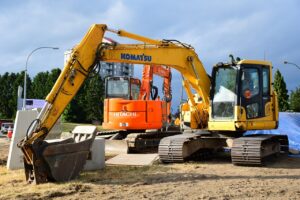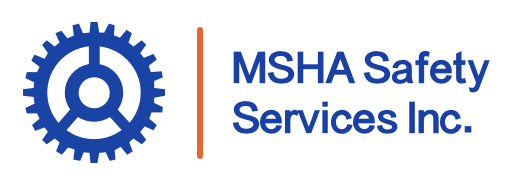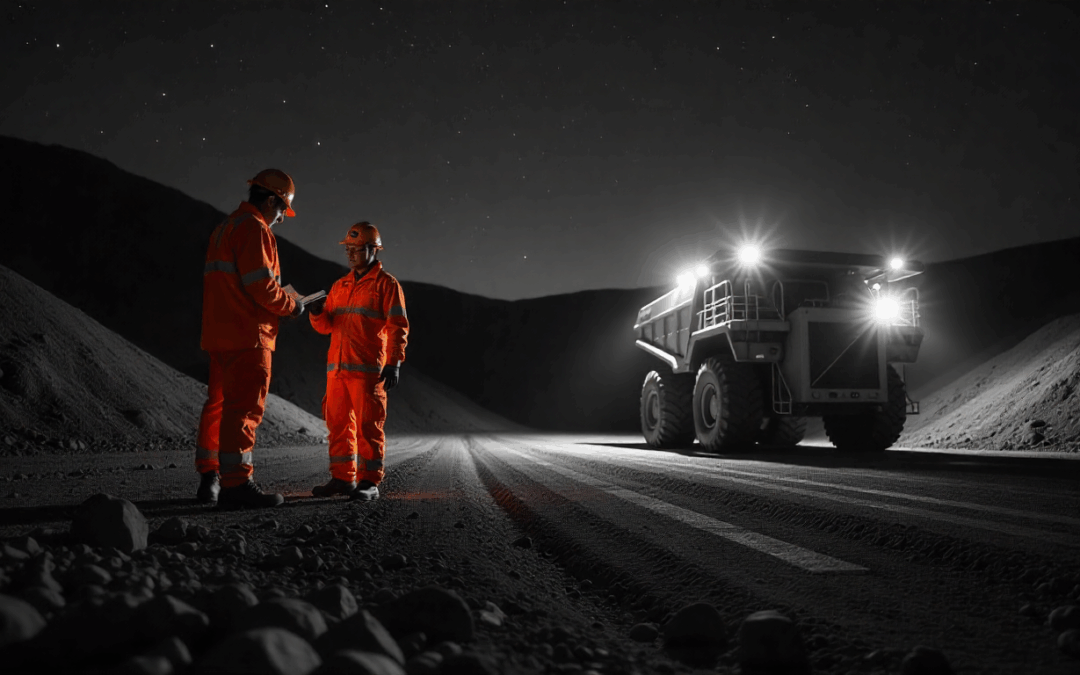Mining has always carried a unique set of risks—it’s tough, physically demanding work, and the environments are often unpredictable. That’s why the Mine Safety and Health Administration (MSHA) plays such an important role in keeping miners safe on the job. From setting the ground rules to conducting inspections and making sure companies stay compliant, MSHA is the backbone of safety in the mining world. Whether you’re running a small gravel pit or overseeing a large underground operation, understanding how MSHA works can help protect your team—and your business—from unnecessary danger and costly penalties.
What Is MSHA and Why Its Role in Mining Safety Matters
MSHA, short for the Mine Safety and Health Administration, is a federal agency under the U.S. Department of Labor. Since its creation under the Federal Mine Safety and Health Act of 1977, its core mission has been straightforward: reduce injuries, illnesses, and deaths in the mining industry.
Without MSHA’s involvement, many mines might not have clear, enforceable safety standards. The agency steps in to make sure companies train their workers, follow safe practices, and keep solid records. This oversight not only helps prevent accidents—it also builds a culture where safety is a top priority, not an afterthought.
Overview of MSHA’s Safety Standards for Mining Operations
MSHA enforces two main sets of rules, and which one applies depends on the type of mining you’re doing:
- 30 CFR Part 46 covers surface mining operations—things like sand, gravel, crushed stone, and dredging activities.
- 30 CFR Part 48 applies to underground mining, which often comes with more complex safety concerns and training requirements.
These standards address everything from how equipment is maintained to how hazardous materials are handled. They also set expectations around training, ventilation, and emergency planning. By following the right set of rules, operators can create a safer environment for everyone on-site.
How MSHA Standards Differ for Surface vs. Underground Mines
Surface and underground mines share the same overarching goal—keep workers safe—but how they get there can look pretty different.
For surface mines, the focus is often on hazards like falls, moving equipment, and controlling dust. These sites tend to be more open, but they still come with risks that require consistent attention.
In underground mines, safety standards lean heavily on ventilation, roof support, and escape procedures. Working below ground introduces different challenges—limited exits, reduced visibility, and potentially dangerous air quality.
Understanding which set of MSHA standards applies to your site ensures your team gets the right training and that you’re prepared for inspections and compliance requirements.
How MSHA Conducts Routine and Surprise Inspections
MSHA doesn’t just drop by once in a while—they conduct both scheduled and surprise inspections throughout the year. These inspections are designed to assess whether mining operations are following regulations and to catch any safety issues before they turn into serious problems.
Inspectors usually review training records, maintenance logs, and safety procedures. They also observe daily operations—how workers move around, use equipment, and follow protocols. This is where the importance of MSHA reports and documentation in accident investigations becomes clear. Detailed records not only help during routine inspections but are also essential if an incident occurs. Having accurate, up-to-date documentation can provide evidence and context during an investigation, helping determine root causes and prevent future accidents.
Keeping thorough records and maintaining a state of constant readiness is key to avoiding penalties and demonstrating a strong commitment to worker safety.
What Inspectors Look for During an MSHA Safety Audit
When MSHA auditors show up, they’re not just scanning for paperwork—they want to see proof that safety is woven into the daily rhythm of the mine. That means checking that pre-shift workplace exams are being done and documented correctly.
They’ll also go over training records to make sure every employee has completed the necessary courses—whether it’s for new hires, task-specific roles, or annual refreshers. Equipment maintenance logs are another big focus. Inspectors want to see that machinery is checked regularly and that any issues get fixed fast.
Emergency response plans need to be up to date and clearly understood by everyone on-site. Air quality, dust levels, and ventilation reports are reviewed, too, especially in underground settings.
Being organized goes a long way. If your safety documents are current and easy to access, inspections tend to go smoother—and it reinforces your commitment to compliance and safety.
Common Violations Cited by MSHA and How to Avoid Them
Even with the best intentions, mining operations sometimes fall short—and MSHA notices. Some violations are surprisingly common and almost always avoidable.
One of the biggest issues is inadequate training. Whether under Part 46 or Part 48, not keeping proper training records—or worse, skipping training altogether—can trigger citations fast. The same goes for workplace exams. These are supposed to happen before each shift, and missing or incomplete records can raise red flags even if no obvious hazard is present.
Equipment maintenance is another problem area. If machines aren’t being serviced regularly, or repairs are delayed, inspectors may consider the site unsafe.
Lastly, poor documentation in general can cause trouble. MSHA places heavy importance on paperwork, so things like missing emergency plans, outdated hazard assessments, or incomplete inspection logs can all lead to citations.
The fix? Regular self-checks, consistent training schedules, and a good system for keeping documents up to date and organized.
MSHA Enforcement Actions: Citations, Fines, and Penalties
When MSHA finds a problem, the response depends on how serious it is. Minor issues might lead to what’s called a Non-Significant and Substantial (Non-S&S) citation. These usually point out concerns that aren’t likely to cause harm immediately but still need to be corrected.
More serious infractions are labeled Significant and Substantial (S&S)—meaning they could reasonably lead to an accident or injury if left unaddressed. These come with higher fines and closer follow-up from MSHA.
In urgent situations, the agency can issue a withdrawal order, which forces part—or all—of a mine to shut down until the danger is eliminated. That kind of disruption can be costly, not just financially but also in terms of reputation.
MSHA also has the power to issue civil or even criminal penalties if they determine that a company acted recklessly or willfully ignored safety regulations. While those extreme cases are rare, they underline just how seriously safety violations are taken.
The Role of Training in Meeting MSHA Compliance Requirements
Training isn’t just a box to check—it’s one of the most important parts of keeping miners safe and staying on the right side of MSHA. Every miner must go through initial training before starting work, which includes an overview of site-specific hazards and safety procedures.
Then there are annual refresher courses, which help reinforce core safety principles and introduce any updates to policies or regulations. These are required by MSHA and help ensure safety doesn’t fade with time.
If someone takes on a new task or uses unfamiliar equipment, they’ll need task-specific training to get up to speed. That way, everyone knows how to do their job safely, not just efficiently.
Many operations also include emergency drills—practicing what to do in case of a fire, collapse, or equipment failure. These exercises not only meet MSHA standards—they also demonstrate why MSHA training is crucial for real-world mining safety. When workers are well-prepared, they can act quickly and effectively in high-stress situations.
Good training builds confidence. It helps workers stay alert, recognize hazards, and protect themselves and each other in dangerous conditions. If you are unsure as to what training would work best for you, MSHA Safety Services can help!
MSHA Safety Services delivers high-impact, fully compliant training led by MSHA Blue Card–certified instructors. Whether through flexible online courses or hands-on, site-specific instruction, our programs are designed to improve retention, reduce violations, and build a strong safety culture. With added support like facility audits, industrial hygiene services, and project-based safety staffing, MSHA Safety Services helps mining operations not only meet—but exceed—MSHA compliance standards
How MSHA Works with Employers to Improve Safety Practices
While MSHA is known for enforcement, it also plays a supportive role. Through its compliance assistance programs, the agency helps mine operators understand the rules and improve safety before problems arise.
These programs offer training materials, resources, and one-on-one guidance. For operators committed to building a strong safety culture, MSHA can be a partner as much as a regulator.
Taking advantage of these resources can prevent violations, improve working conditions, and even boost morale among the workforce.

Why Compliance with MSHA Rules Saves Lives
At the end of the day, MSHA compliance is about far more than avoiding fines. It’s about sending people home safely. Every regulation is in place for a reason—usually because someone, somewhere, got hurt.
When mining companies take safety seriously, injuries and fatalities drop. Long-term health risks, like lung disease from dust exposure, are reduced. And teams can work with more confidence knowing there are solid plans in place for the unexpected.
The Ongoing Impact of MSHA Standards and Enforcement
Since MSHA’s founding, the mining industry has seen a major drop in fatalities and serious accidents. That’s thanks to stronger standards, better training, and more consistent enforcement. But progress doesn’t mean the job is done. New technologies, evolving risks, and workforce changes all require continuous attention. Staying ahead of the curve with compliance isn’t just smart—it’s necessary.
By following MSHA guidelines and prioritizing safety every day, mine operators not only protect their workers but also help raise the standard for the entire industry.

